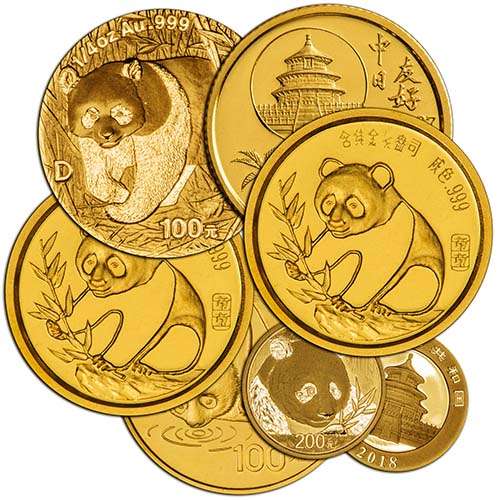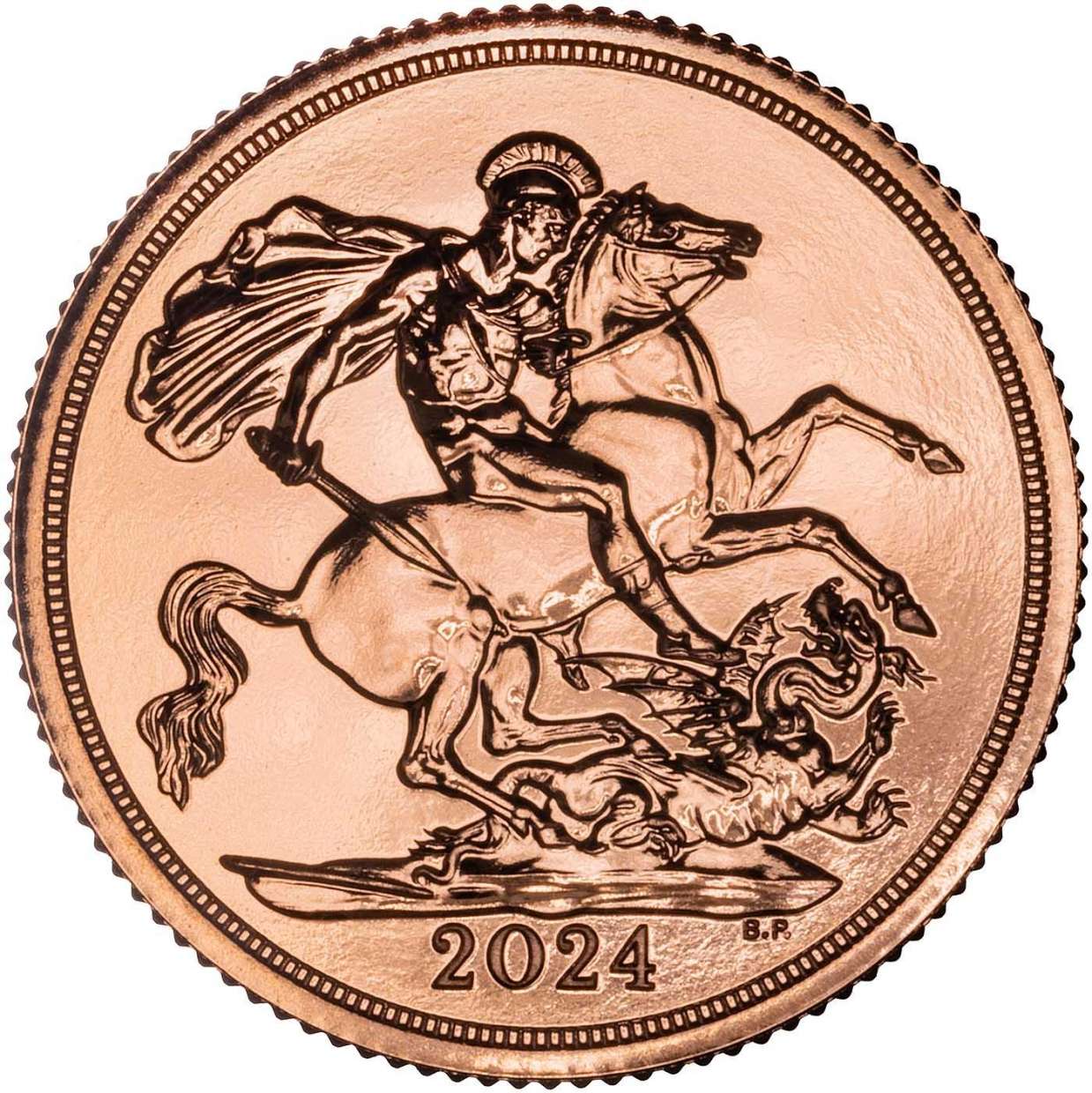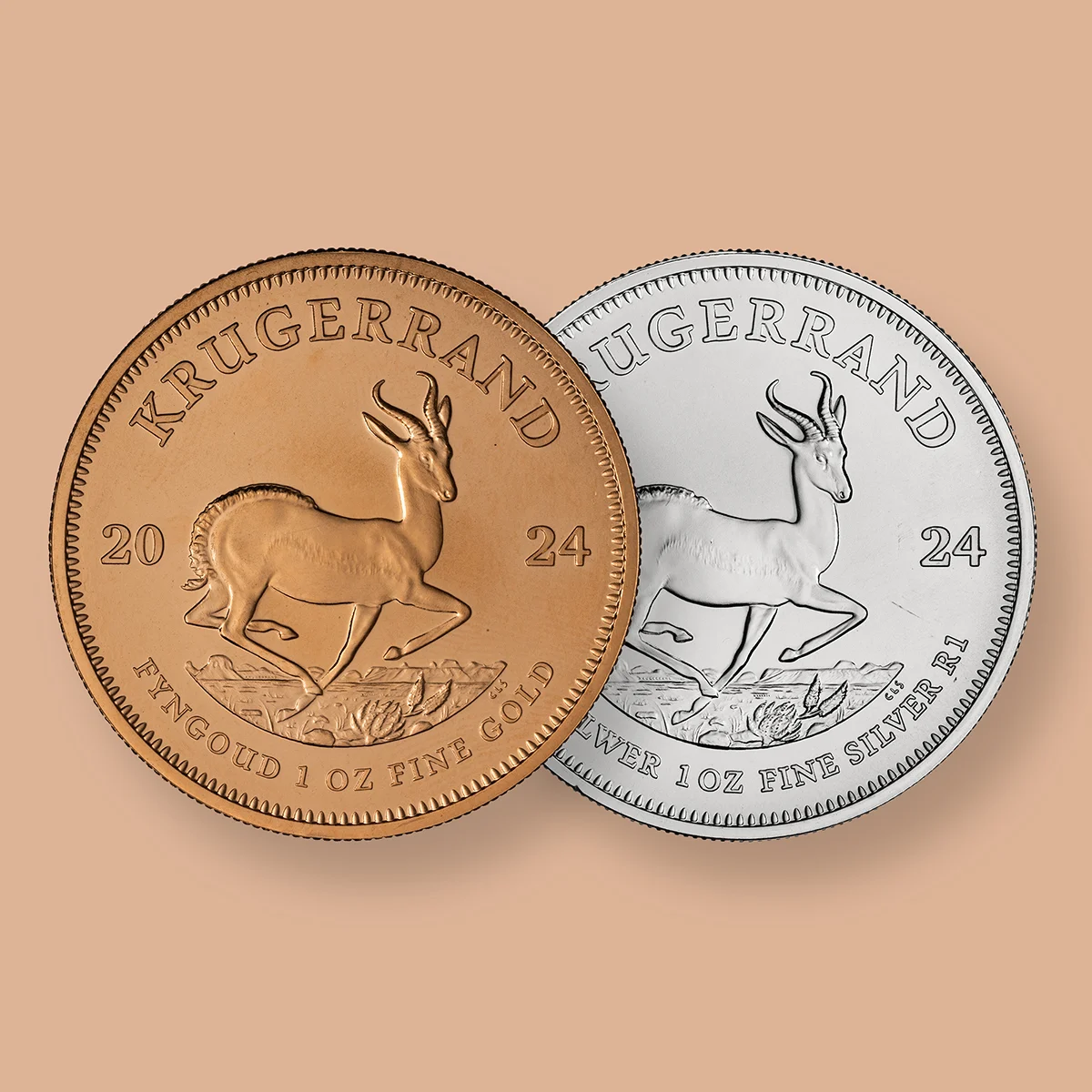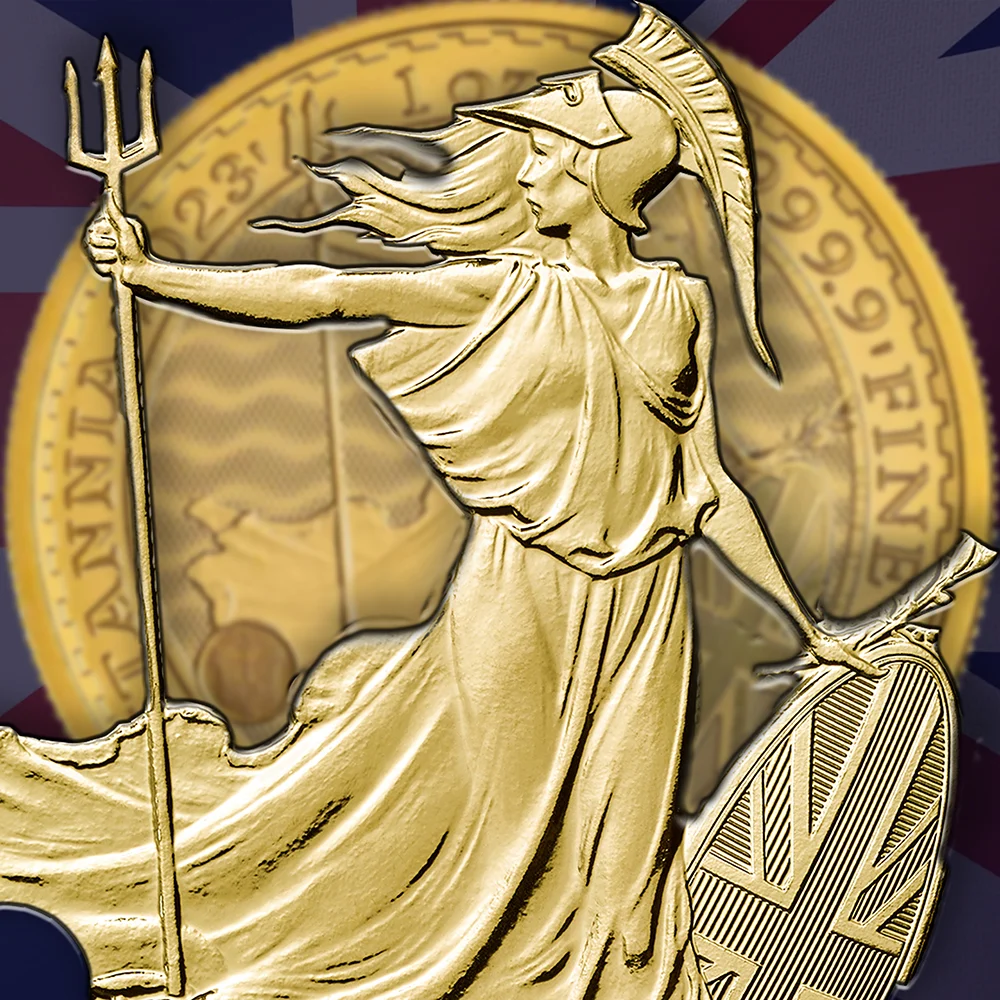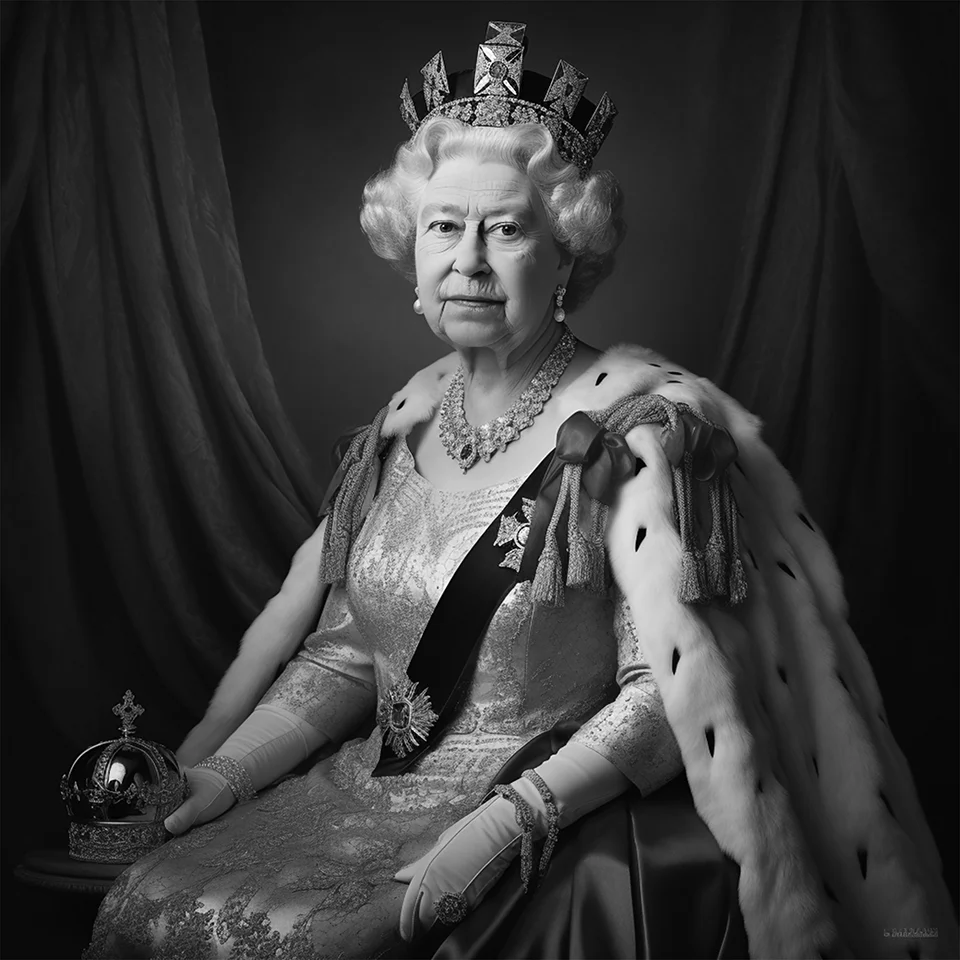The Panda - Chinese Bullion Coins
Synopsis
The Bullion Pandas are eagerly anticipated by coin collectors all over the world and each year we start to get phone calls in the summer asking for release dates and enquiries about pre-ordering the next year's coins. Each year features a unique design which make them highly collectable for coin investors, and they are issued in both gold and silver. Both the gold and silver panda coins have a fineness of 99.9% of each respective precious metal.
Gold Pandas were first issued in 1982 in weights of 1, 1/2, 1/4 and 1/10 troy ounces, denominated in values of 100, 50, 25, and 10 yuan respectively. A 1/20 ounce 5 yuan Gold Panda was issued from 1983 onwards, alongside a silver 1oz Panda with a face value of 10 yuan.

The Panda Bullion Coin Collection

Metric Panda Coins
From 2016, Chinese Panda coins have been issued in metric weights instead of troy weights. The Gold Pandas are Chinese legal tender and are currently issued in face value denominations of 500, 200, 100, 50 and 20 yuan, corresponding to the weights of 30g, 15g, 8g, 3g and 1g respectively. The 30g Silver Panda has a face value of 10 yuan.
The 2024 Design
The 2024 Panda reverse features an engraving of a parent panda with their cub, seated on its hind leg, gazing at each other. The panda is native to China and is seen as a symbol of friendship and peace. As with all previous years, the obverse bears the Temple of Heaven which is located on the original site where the ancient emperors of the Ming and Ch'ing Dynasty held their Heaven Worship Ceremonies. This site is greatly revered by the Chinese; it epitomises their cultural heritage and was designated a UNESCO World Heritage site in 1998.
China Diverts from World Standards

2015 Panda
In 2015, the People's Republic of China caused a stir in the bullion world when they announced that they would be omitting the weights from their popular panda coins. Although the gold and silver coins remained the same weights and fineness as in previous years, the information was no longer stamped on the coins. This enabled China to market them in grams within China whilst continuing to use troy ounces throughout the rest of the world.
2016 Panda
This was followed by a further shake up of the system when in 2016 the panda coins were issued for the first time in decimal metric weights, rather than customary troy weights. Troy ounces are little-known within China and the metric system is prevalent there, so it made sense for the People’s Bank of China to issue the Panda coins in rounded metric units.

Gold Content Comparison Table
Despite this change in unit of weight, sales continued to rise and the 2022 Chinese Panda coins in metric weights are proving to be as popular as ever.
| 1982 - 2015 Panda Weight in Ounces | 1982 - 2015 Panda Weight in Grams | 2016 - Present Panda Weight in Ounces | 2016 - Present Panda Weight in Grams | |
| Gold Pandas | ||||
| 5 Yuan | 1/20 | 1.55 | 0.0322 | 1 |
| 10 Yuan | 1/10 | 3.110 | 0.0965 | 3 |
| 25 Yuan | 1/4 | 7.77 | 0.2572 | 8 |
| 50 Yuan | 1/2 | 15.55 | 0.4823 | 15 |
| 100 Yuan | 1 | 31.1035 | 0.9645 | 30 |
| Silver Pandas | ||||
| 10 Yuan | 1 | 31.1035 | 0.9645 | 30 |
Background of The Panda Bullion Coin
The official mint of the People's Republic of China produces a variety of coins in different alloys and sizes. Among their most popular offerings is the gold bullion coinage of the Panda series. The one-ounce gold Panda was first introduced in 1982, followed by fractional sizes including a half, a quarter, a tenth, and a twentieth, all made from .999 fine gold. The gold series is consistently produced in these five different sizes.
Additionally, there is a silver Panda series featuring the same design as the gold coins. The silver Pandas were initially issued in 1983, initially as proof versions only, with the one-ounce version introduced in 1989. Platinum and palladium coins with the same beloved Panda design are also minted, although they are relatively rare and command higher premiums. These Panda coins hold legal tender status in the People's Republic of China and are highly sought after worldwide due to their exceptional quality and beautiful designs.
China changes the design on the reverse of the coin each year, showcasing different portraits of the Panda, which greatly enhances their appeal among collectors. The only exception to this annual change occurred in 2001 and 2002 when the design remained the same due to a freeze on alterations. However, collectors expressed a preference for the annual changes, prompting China to return to its original policy.
On the reverse of the coin, you can also find stamped at the bottom the actual weight and fineness of the gold. This annual design variation undoubtedly adds to the collectability of these coins. The obverse of the coin features the Temple of Heaven, one of China's most celebrated architectural and historical wonders. At the top, Chinese characters read "People's Republic of China," and at the bottom, you'll find the year of issue.
Troy Ounces Vs Metric Units
The vast majority of the English-speaking world, including the United States, Australia and the United Kingdom, use troy ounces when calculating precious metal prices. The UK's A.M. and P.M. gold fixes are provided by the London Bullion Market Association (LBMA), who also use the measurement. The LBMA Good Delivery bar standard weights are 400 troy ounces for gold and 1,000 troy ounces for silver. Furthermore, most bullion coins from the major mints are issued in multiples or fractions of troy ounces as standard. You could say the modern bullion market is built around the troy ounce, so why change?
When it comes to bars, or larger coins, we tend to use grams and kilos anyway. Sovereigns weigh 7.98g and contain just under quarter of a troy ounce (0.2354oz) of gold. The weight does not discourage customers, in fact, they are probably our most popular gold bullion coin. What sets sovereigns apart from pandas though, is the rich numismatic history which precedes modern standards.
Converting into troy ounces or grams is not a hard task (here at Chard, we're used to dividing or multiplying everything by 31.1035 - those six digits are all but branded into our brains). It requires some knowledge on converting the spot price into grams (or the coin into troy ounces) which may deter the average investor - people do not like changing from customary to metric after all.
The use of troy weights appears “outdated” according to the Chinese though, and they are pushing hard to pressure the bullion market to adopt metric weights. What do you think – is this a desirable step?
Conclusion
We hope you enjoyed learning about the history of The Panda - Chinese Bullion Coins. If you want to delve into the history of other world bullion coins, we recommend checking out historical coin blogs such as "The History of the Krugerrand" or "The History of the American Eagle Bullion Coin," to name just a couple of our informative guides.
Both our Beginners Guide To Gold Investing and The Complete Gold Guide offer excellent information for all types of investors who are looking to diversify their portfolios into the world of precious metals.
Related Blog Articles
This guide and its content is copyright of Chard (1964) Ltd - © Chard (1964) Ltd 2024. All rights reserved. Any redistribution or reproduction of part or all of the contents in any form is prohibited.
We are not financial advisers and we would always recommend that you consult with one prior to making any investment decision.
You can read more about copyright or our advice disclaimer on these links.



